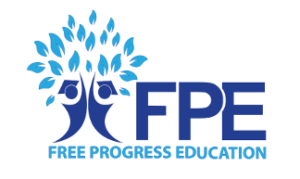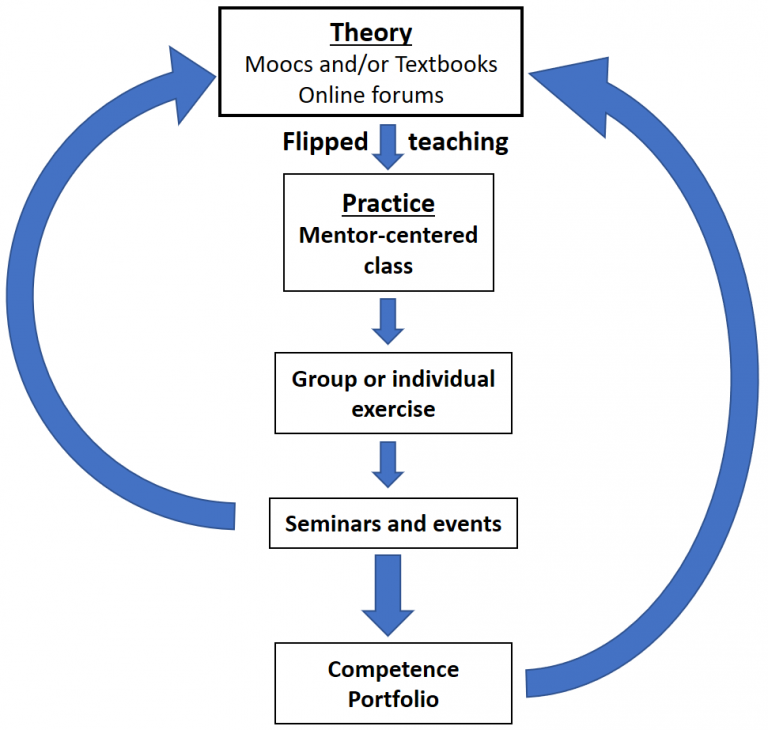
Structure of the learning process in a FPU Physics faculty
A group of students (say min. 5, max 10) wants to learn the basic foundations of modern theoretical physics. For this a didactical according to a flipped teaching format and inquiry based learning has been developed as follows.

Phase 1: Students first study on a textbook (TB) by themselves (say classical mechanics). This TB is a first choice from a list of other alternatives everyone can use also. But the first choice TB is considered one of the best and is therefore taken as the primary source that is followed by the study group.
Phase 1b: During the TB study first issues and questions may arise that could be preliminary discussed on a forum section online. Here students can interact by discuss things in a written format online as a first informative session in preparation to further elaboration in phase 2.
Phase 2: When the above phase has been worked through by the participants (say a chapter that introduced Euler-Lagrange equations), they meet ideally in a brick and mortar structure and/or (as it is most probable, especially in the first phases of existence of the FPU) online on a study community (e.g. using the Moodle platform) via Zoom or Skype or other video conferencing systems. Here they meet with one advisor or ‘learning mentor’ (a physicist or former student who became an expert in the subject) who has no political authority, but functions as a ‘helper’. This mentor is already experienced with the subject and will help students to clarify whatever they did not understand in the reading of phase 1 and eventually adds exercise and/or discussions, etc., but most of all encourages students to inquire on the basis of an inquiry-based learning.
Phase 3: The social phase and the opportunity for students to know each other’s and eventually initiate project-oriented collaborations is also an important part of the learning process in a FPU. To encourage this, seminars or events are organized, which can relate but must not necessarily relate to the ongoing subject. Say for instance that of attending a seminar on celestial mechanics or a question and answer with someone expert in a field online, make an interview with Nobel laureate, the online attendance with a discussion of the launch of a SpaceX rocket, etc.
Phase 4: Repeats phase 1+2+3 until the TB has been studied through or at least a part of it.
Phase 5: Once a specific amount of knowledge has been acquired the student has the possibility to show how he/she learned the topic. Instead of tests and grades every student is therefore expected to do a research an inquiry or create a document with the notions learned and which demonstrates how the contents have been learned and applied. This should lead to a first part of a competence portfolio.
Phase 6: The next subject and TB is learned repeating the loop from 1-5.
Phase 7: After all the subjects one wanted to learn have been learned (not all are necessary, it depends from what one wants to learn), a sort of final thesis or research or special and individual creation can be delivered. This adds to the final part of the competence portfolio and would be eventually the most important part of it. The student can rely on an unknown mentor for the final ‘MD thesis’, but the mentor is not necessary and at any rate must not be disclosed.
Once this is done, the student has gone through all the subjects to be learned without exams or painstaking selections, but has build his/her personalized portfolio which may already contain research, eventually publications, a book, the creation of teaching videos, etc., which is something a graduate student can only dream of!
Schematically the idea can be summarized in the following diagram.
